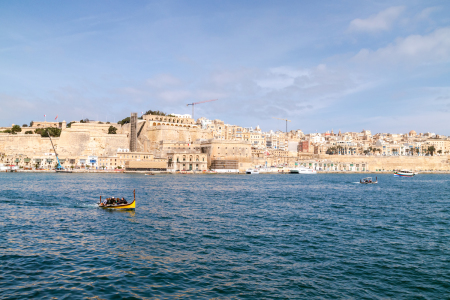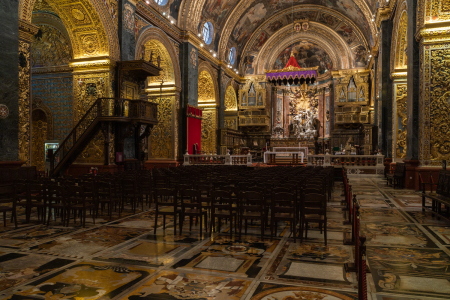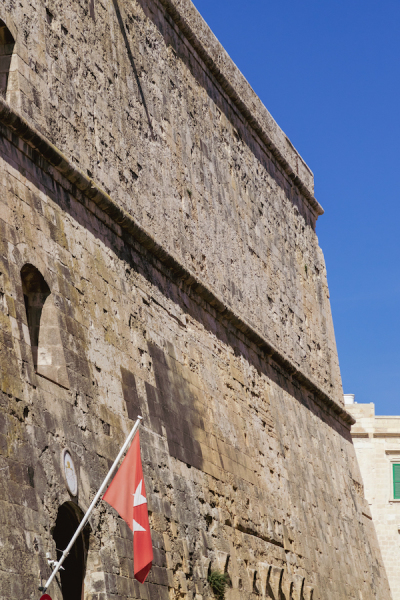Travel: Postcard from Malta

If Malta is known, it’s known for what used to be called Christendom.
Located in the Mediterranean Sea about 100 miles from Italy’s Sicily, the island-republic has been at the tumultuous crossroads of civilizations and conquests for several thousand years. Of all that history, the Christian history and heritage are what stand out the most.
The Maltese have long claimed that none other than St. Paul the Apostle was shipwrecked here on his way back to Rome to stand trial in the year 60.
Once ashore, Paul did what he did best: Propagate the faith. The inhabitants, along with the Roman imperial official (and later St.) Publius, are said to have converted to Christianity, making Malta one of the world’s oldest Christian countries.
This isn’t without an asterisk, as some say Paul was actually shipwrecked on an island off the coast of present-day Croatia. That controversy aside, generations of tradition combined with some circumstantial evidence, including four Roman-era anchors found in a place that fits the Bible’s description of where Paul shipwrecked, seem to support the Maltese claim.
While the Pauline tradition is deeply ingrained given Roman Catholicism’s status as the state religion, later chapters of history are what actually put Malta on the map. Quite literally.

The Sovereign Military Order of St. John of Jerusalem, Rhodes and Malta was given the islands in 1530 by Emperor Charles V after periods of Muslim, Norman and Spanish rule. They turned the Maltese archipelago into a monastic state or, as we might say today, a theocratic monarchy.
Better known as the Knights Hospitaller, the order was drawn from the ranks of nobles and aristocrats across Europe, including the British Isles, before the Reformation. It elected a prince-grand master, who ruled with temporal and spiritual powers.
Christian control of Malta was put to the test in 1565 when a few thousand knights successfully defended their possession during a siege of over three months by the Muslims of the Ottoman Empire. Had they not succeeded, the history of Europe — given Malta’s proximity to the continent, particularly the Italian Peninsula — might have been different.
By 1798, however, the power of the once-mighty knights had waned to the point where Napoleon easily took control during a stopover on his Egyptian campaign.
Within two years, the British liberated Malta from French rule. They would remain until Malta gained independence, like so many other British colonies, in the two decades after World War II.

The tradition of the knights is maintained today by the Sovereign Order of Malta.
The Rome-based lay order within the Roman Catholic hierarchy issues its own passports and has a degree of international recognition akin to that of a micro-state. While now based in Rome, its embassy within the old walls that surround Malta’s baroque capital of Valletta is a visible reminder of the past.
If you go
Many of the baroque edifices in the capital date to the period immediately after the 1565 siege. Baroque also dominates the small-town cityscape of the so-called Three Cities directly across the Grand Harbor from Valletta, the ex-capital of Mdina and the old citadel on Gozo, an island that feels a little like a red-headed stepchild when compared to the country’s main and eponymous island.
In Valletta, must-visits include the conventual church-turned-St. John’s Co-Cathedral, a masterpiece that’s best viewed during an exclusive after-hours tour, and the National Museum of Archaeology. Be sure to also visit the Inquisitor’s Palace in Birgu (one of the Three Cities), St. Paul’s Cathedral in Mdina and the nearby St. Paul’s catacombs in Rabat.
Getting to Malta requires one or two connections as there aren’t flights between the United States and Canada. This required me to fly to London’s Heathrow Airport and then catch a connecting flight on flag-carrier Air Malta.
Flying the flag-carrier is a great way to get introduced to a country. While my business-class ticket was affordable and the overall service was very good, Air Malta can’t seem to figure out whether it’s an ambassador for Malta or a low-cost carrier competing with the European equivalents of low-cost airlines Frontier and Spirit.
I stayed at the Rosselli AX Privilege, an upscale hotel housed within a period building at the heart of Valletta. If I had to do it over again, I would have booked a room at The Phoenicia as the location is considerably quieter at night. Another option is Casa Rocca Piccola, a 16th century palace belonging to a Maltese noble family, with five rooms that are rented out on a bed-and-breakfast basis.
Getting around Malta is easy and doesn’t require a rental car. Everything in Valletta is within walking distance. Anything beyond the capital is easily reached by ferry, taxi or an Uber ride. A good hotel can also arrange a private driver for the day.
Dennis Lennox writes a travel column for The Christian Post.
Dennis Lennox writes about travel, politics and religious affairs. He has been published in the Financial Times, Independent, The Detroit News, Toronto Sun and other publications. Follow @dennislennox on Twitter.





















